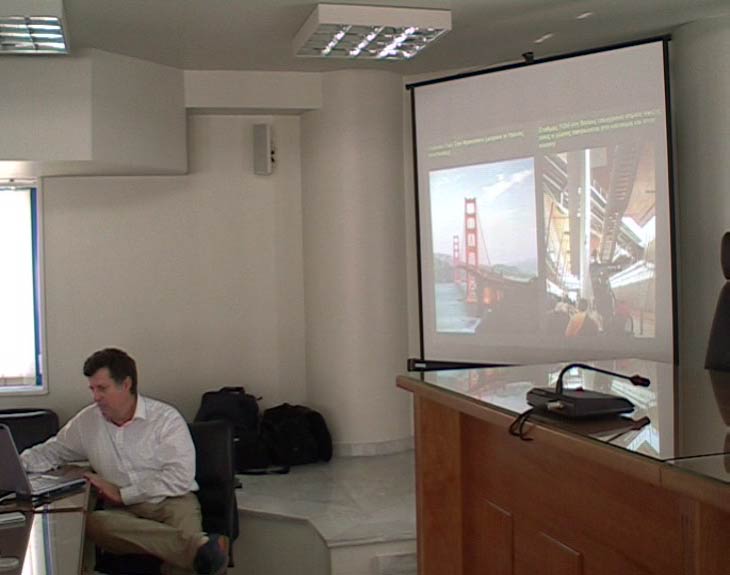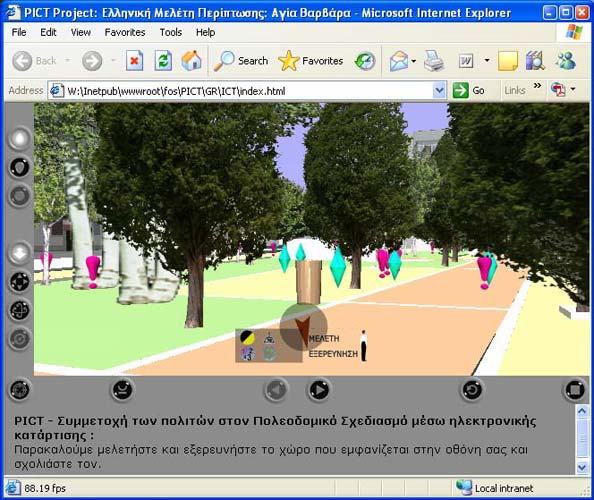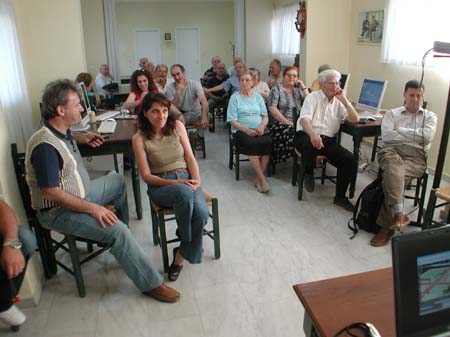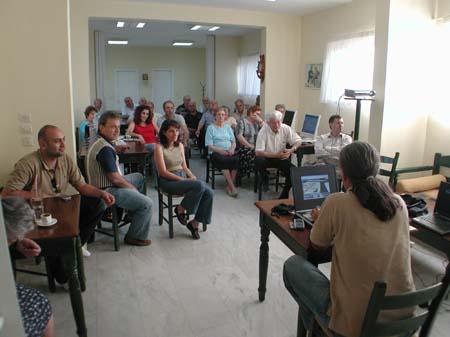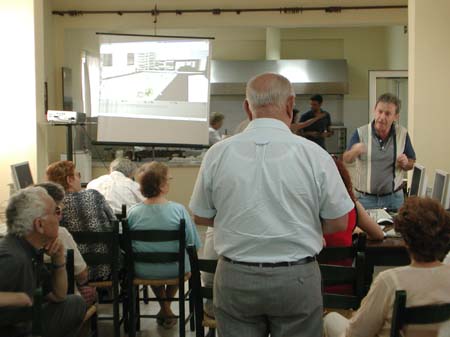2002 - 2006
Principle Investigator:
Vassilis Bourdakis
Funding Body:
Leonardo da Vinci Programme of the European Commission
Principle Investigator:
Vassilis Bourdakis
Funding Body:
Leonardo da Vinci Programme of the European Commission
The Planning Inclusion of Clients through e-Training -PICT- project was a three-year pilot project co-funded by the Leonardo da Vinci Programme of the European Commission between 2002 and 2005. The project was inspired by the on-going debate about the relationship of people with their cities launched by the initial Charter of Athens (1934) and re-defined by the New Charter of Athens adopted by ECTP (2003). It responded to the viewpoint that the involvement of communities in public decisions builds social capital and strengthens the civil society.
The continuing debate on the participation of the public in official decisions is reflected European policy, as expressed in the European Spatial Development Plan (ESDP), Local Agenda 21 and the Sustainable Development Framework of Gothenburg. Consequently, it has been widely accepted, at least in principle, in the European Union, that town planning and urban design are part of the sustainable development process and as such require consensus building through the engagement of citizens.
However, it has been similarly recognised that to promote effective communication between the public and the planners, both sides need to acquire special skills that enable them to develop a "common language". PICT has tried to answer the following question: what are the skills that planners and the public need in order to engage in a constructive dialogue and, moreover, how can new technology help to improve the communication between the two sides?
Answering this question has been a multiple and complex task, especially as the objective was to develop a methodology and matching ICT tools that may be applied across Europe. An international partnership of organisations with planning, research and teaching responsibilities has been set up with the following remit:
• review public participation theory, legislation and practice in Europe, with a focus in UK, Belgium, Greece and Hungary; identify best practice as well as examples that can illustrate the difficulties of public participation.
• investigate and identify citizens' and planners' learning needs through surveys;
• develop suitable ICT tools that assist the public to visualise plans more directly (especially those concerning redevelopment or refurbishment of an area) and express their opinions on different aspects of the plans
• create learning schedules and appropriate curricula that would enable the public and the planners to develop the necessary skills for their engagement in planning participation, including communication skills, an understanding of, planners and inhabitants' roles and the use of information technology tools;
• provide the necessary ICT infrastructure and human resources for delivering the above learning schedules and curricula;
The methodology developed by the project partnership was pilot - tested in five locations across Europe. Space, computers and technical assistance were provided in each pilot area, to facilitate the access of inhabitants to the visualisation tools; training sessions were held for the local population and the planners; and Local Consultative Committees were set up consisting of local inhabitants, planners and local associations, to self-manage the process. Local redevelopment or refurbishment plans were put to scrutiny by local inhabitants, and in some pilot areas these plans were subsequently revised on the basis of the input of the inhabitants and implemented.
The direct benefit to the project's target group was that local people, both residents and entrepreneurs, benefited by better understanding planning concepts and practice, thus becoming more competent to contribute in the shaping of their area. PICT also benefited planners, by improving their ability to better understand and use new planning and design technologies and communicate with inhabitants. Local authorities learned different ways of engaging the citizens in a democratic planning process. The universities, that jointly created the learning material, developed easy to use design and mapping tools for a wide range of teaching settings as well as for the direct participation of the public. Moreover, the Local Consultative Committees that were set up in each pilot area brought together local inhabitants and planners, giving them the chance, for the first time in most pilot areas, to sit together, discuss and exchange opinions on local plans.
The results of the PICT project have been widely discussed, and input from planners and researchers has been obtained in two conferences: an e-conference in May 2005 and a final conference in October 2005 in Liverpool, UK . Research carried out in co-operation with Prof. Alex Deffner, DPRD, UTH.

